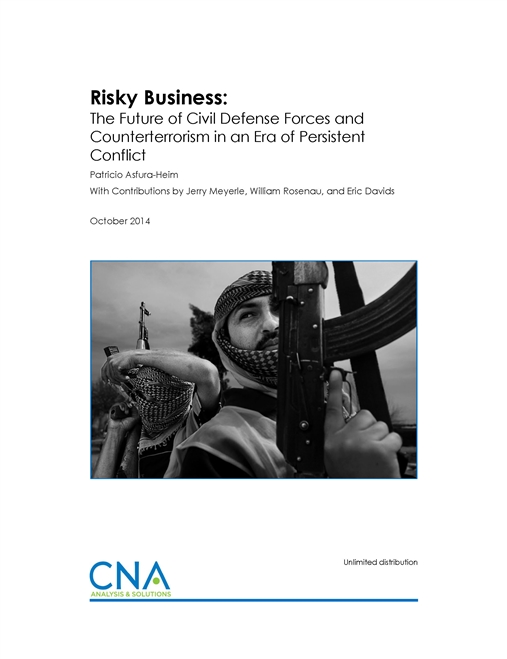Today, the United States faces terrorist threats from a number of militant groups operating from weak or failed states. Over the course of the last decade, the U.S. has become highly effective at killing their leaders and disrupting their operations through raids and airstrikes, sometimes working alongside foreign security forces to do so. However, efforts to further degrade and permanently dismantle these organizations and their support networks have been less successful. As a result, terrorist organizations such as al Qaeda and its affiliates, the Taliban, al Shabab, and now the Islamic State, remain largely intact and continue to threaten the United States and its interests abroad.
While the panoply of extremist groups threatening U.S. interests, allies, and partners today may be labeled “terrorist organizations” for political and even legal expedience, in scope and scale they are remarkably similar to the insurgent groups the United States fought against in Iraq and Afghanistan. Groups such as the Islamic State, al Qaeda in the Arabian Peninsula, al Shabab, and Boko Haram have local political objectives and depend on the population for support. They embed themselves into vulnerable communities and then use these sanctuaries to recruit and launch attacks against the government. As such, it is little wonder the application of limited counterterrorism approaches to these groups has had disappointing results.
Given the continued use of under-governed areas by terrorist groups as safe havens and the recent propensity of some of these groups to seize additional territory, along with the shortcomings of many state counterterrorism partners, it is increasingly clear that in some instances, the United States will require new kinds of partnerships on the ground—perhaps with sub-state groups who have an immediate and vested interest in defeating these militant organizations.
This report examines the potential role of irregular, non-statutory, civil defense forces (CDFs) in future U.S. counterterrorism and small-footprint stability operations. In it, we analyze twelve historical case studies of the use of similar forces in Peru, the Philippines, Thailand, Mexico, Nigeria, Turkey, Oman, Pakistan, Vietnam, Iraq, Afghanistan, and Yemen. Our aim in doing so was to help us understand if, when, and how these types of groups could be employed in the security environment of the future as part of a broader counterterrorism toolkit.
Our case studies identified a number of opportunities and challenges associated with the employment of CDFs in states confronted by serious and sustained internal armed opposition. While our analysis suggests CDFs can initially be an effective tool against asymmetric groups which require the support or acquiescence of local populations, their autonomous nature and myriad vulnerabilities also make CDFs difficult to employ and then demobilize successfully.
According to the cases examined, CDFs offer several benefits, as shown in the table below. Because they are cheaper and easier to stand up than formal police and army units, they can quickly provide sufficient numbers of men to secure at-risk communities. In general, they have knowledge of the local population, networks, and geography that outside forces take years to develop. Moreover, as these groups are protecting their families and are beholden to their communities, they tend to be more motivated and less corrupt than many state security forces. In several cases, self-defense groups that were overseen by competent state authorities provided channels through which states could (re)introduce public services into isolated areas where they previously had little or no presence. Such groups also tended to deplete the potential recruiting pool for insurgent groups and terrorists.
Download reportDistribution unlimited.
Details
- Pages: 106
- Document Number: CRM-2014-U-008881
- Publication Date: 10/16/2014
